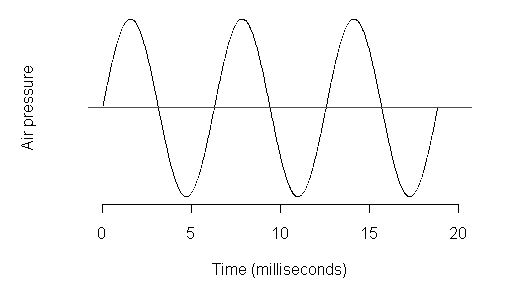
Sound is caused by a vibrating object, such as the tuning fork below.
When the arm of the tuning fork moves outward, it crowds the neighbouring air molecules together (raising the air pressure in the area). The crowded air molecules will tend to move into less crowded (lower pressure) areas, which causes those areas to get crowded, and so on...
When the arm of the tuning fork moves inward, the neighbouring air molecules become less crowded (i.e., it creates a partial vacuum). Air molecules from surrounding areas will tend to move into the new low-pressure area.
The result is an alternating pattern of high and low pressure areas moving outward from the vibrating object. This is a sound wave.
One convenient way to diagram a sound wave is to graph the air pressure at each point in time, the way it might be picked up by a microphone:

In these diagrams, time is represented in the horizontal dimension and air pressure differences are represented in the vertical dimension. The straight (red) line down the middle represents the average background air pressure -- the air pressure that would exist if there were no sound waves. Points above this line represent higher pressure (more crowded air molecules); points below represent lower pressure (less crowded air molecules).